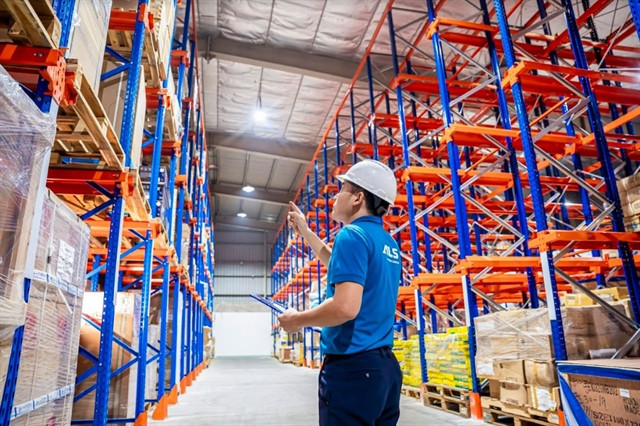Currently, about 40% of goods from other localities are beingtransported through the city. It is home to 10 industrial parks in operationand over 100 industrial clusters. It has also 150 supermarkets, 454 wetmarkets, and more than 10,000 convenience stores for about 10 million cityresidents.
Despite these advantages, the city's logistics development faceslimitations and obstacles due to a small and fragmented system of warehousesand logistics yards and a lack of specialised storage such as cold and coolstorage, according to experts.
A shortage of inland container depots (ICD), high logistics costsand traffic congestion also reduce the competitiveness of businesses.
About 25,000 local logistic enterprises are operating in the city.However, they can only meet about 25% of the local demand, and handle 18% ofimport-export goods. The remaining shares belong to those with foreigninvestment.
At the same time, the local logistics industry has been facingmany difficulties due to the influence of geopolitics leading to the disruptionof international shipping activities, said Chairman of the Hanoi LogisticsAssociation Tran Duc Nghia.
To facilitate logistics development, Hanoi will accelerate theconstruction of logistics infrastructure projects in the area, while activelycoordinating with localities at home and abroad to gradually build the cityinto a logistics operating centre of the northern region.
According to Nguyen Manh Quyen, Vice Chairman of the municipalPeople's Committee, the city strives to start the construction of two dry portsin Co Bi and Duc Thuong communes in 2024, and plans the development of two newlogistics centres in Phu Xuyen and Soc Son districts.
Completing investment procedures for an international containerport in Gia Lam district's Co Bi and Dang Xa communes will be also included.
Furthermore, the city will continue to attract domestic andforeign businesses to invest in the logistics sector. Thus far, it hasintroduced locations for developing nine logistics service infrastructureprojects to investors.
Director of the city’s Science and Technology Department NguyenHong Son said that to support the development of logistic activities, the cityneeded to implement digital solutions and boost investment promotion inlogistics service infrastructure projects.
Suggestions were raised to study and build logistics centres ofappropriate scale on ring roads, connecting goods transiting hubs, warehousesand distribution areas in production, agricultural, industry, and industrialzones. Another solution was to develop smart transportation systems and digitalplatforms that connect good owners, transporters and customers.
Son also suggested the city promote logistics and connect thecapital region to facilitate the transportation and distribution of goods fromthe city to other localities.
Creating conditions to promote the role of professionalassociations related to logistics services, and encouraging and attracting majorinternational and domestic logistics service providers to set up headquarters,and branches and transaction offices in the city should be also included, hesaid.
The plan to develop logistics services in Hanoi by 2025 sets thegoal to develop and support logistics activities to improve the competitivenessof manufacturing and trading enterprises and form a modern logistics system.
The city set a target for its logistics sector to contribute 9-11%to the Gross Regional Domestic Product (GRDP) and obtain a growth rate of 17-21%by 2025. Growth in outsourced logistics will reach 60-65%.
Particularly, the capital city will develop a supply chain anddistribution of agricultural products and food, and increase the application ofinformation technology and e-commerce in business operations, includinglogistics services./.






























